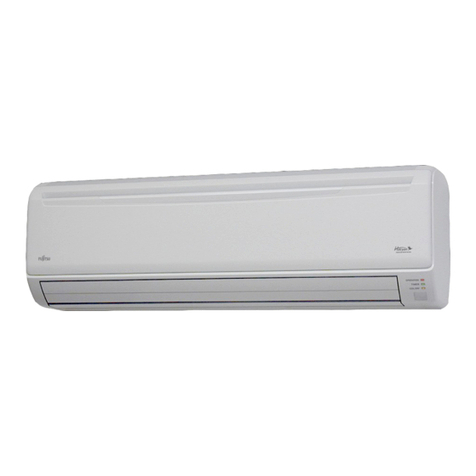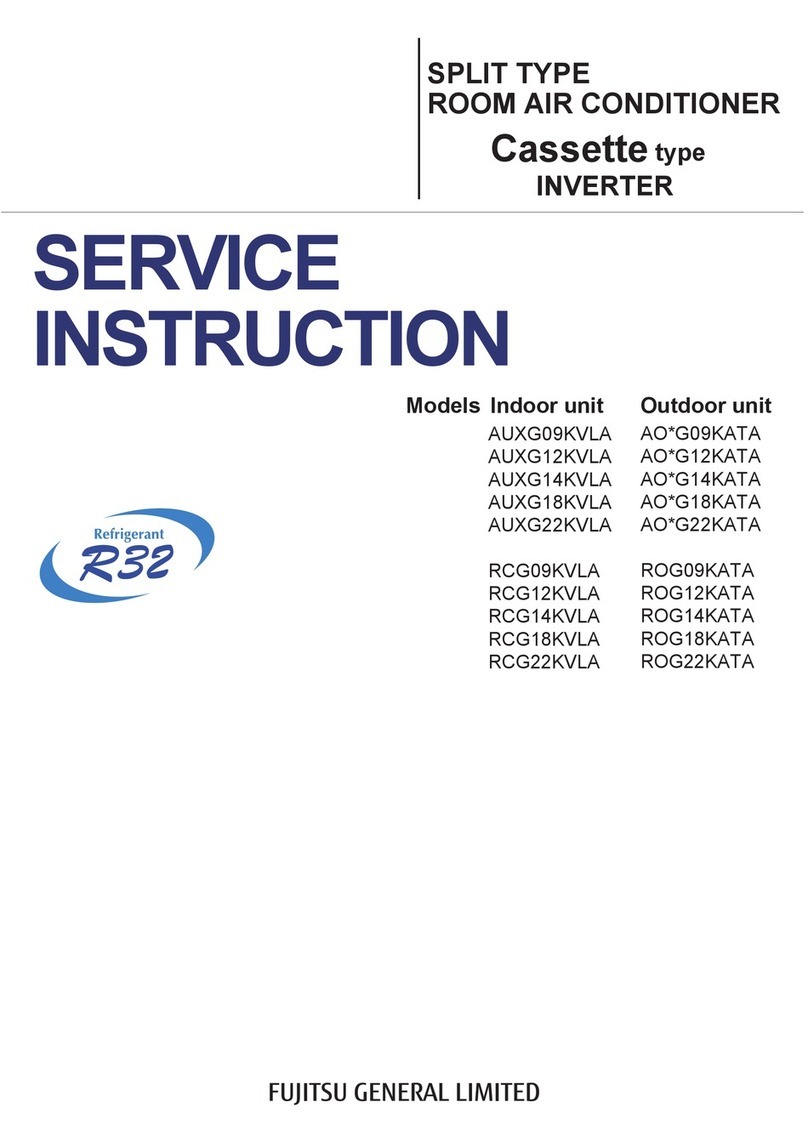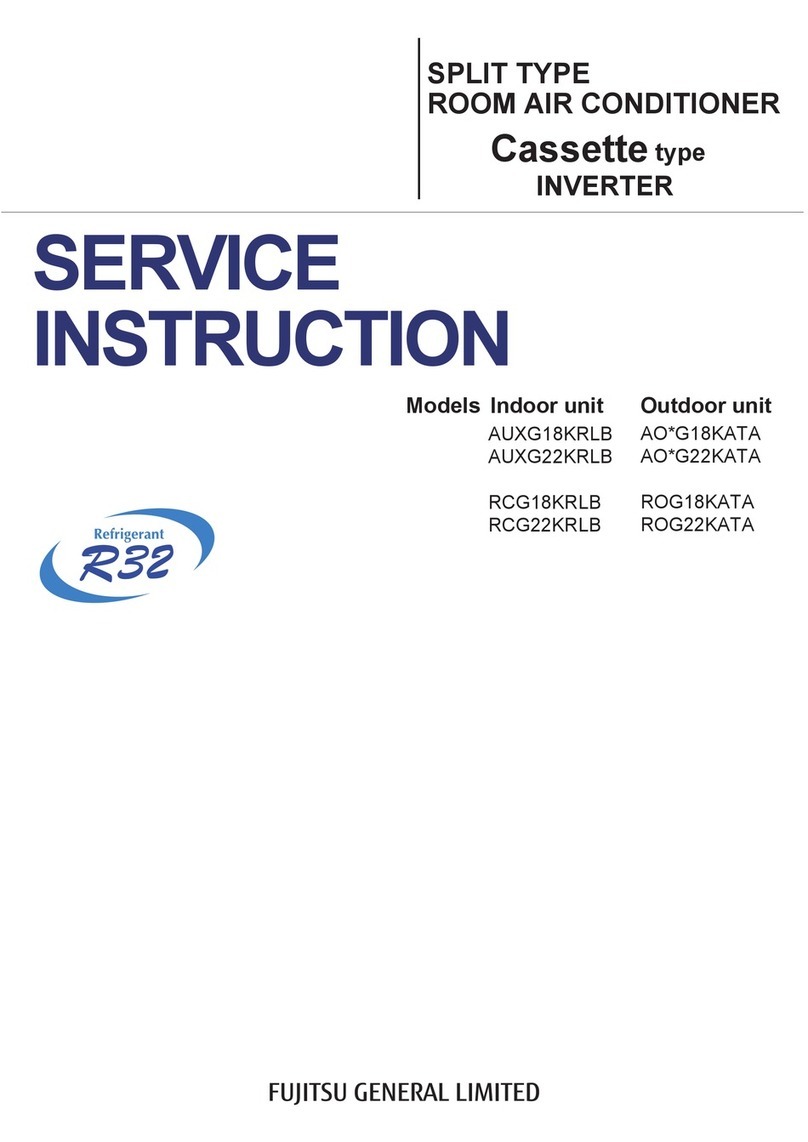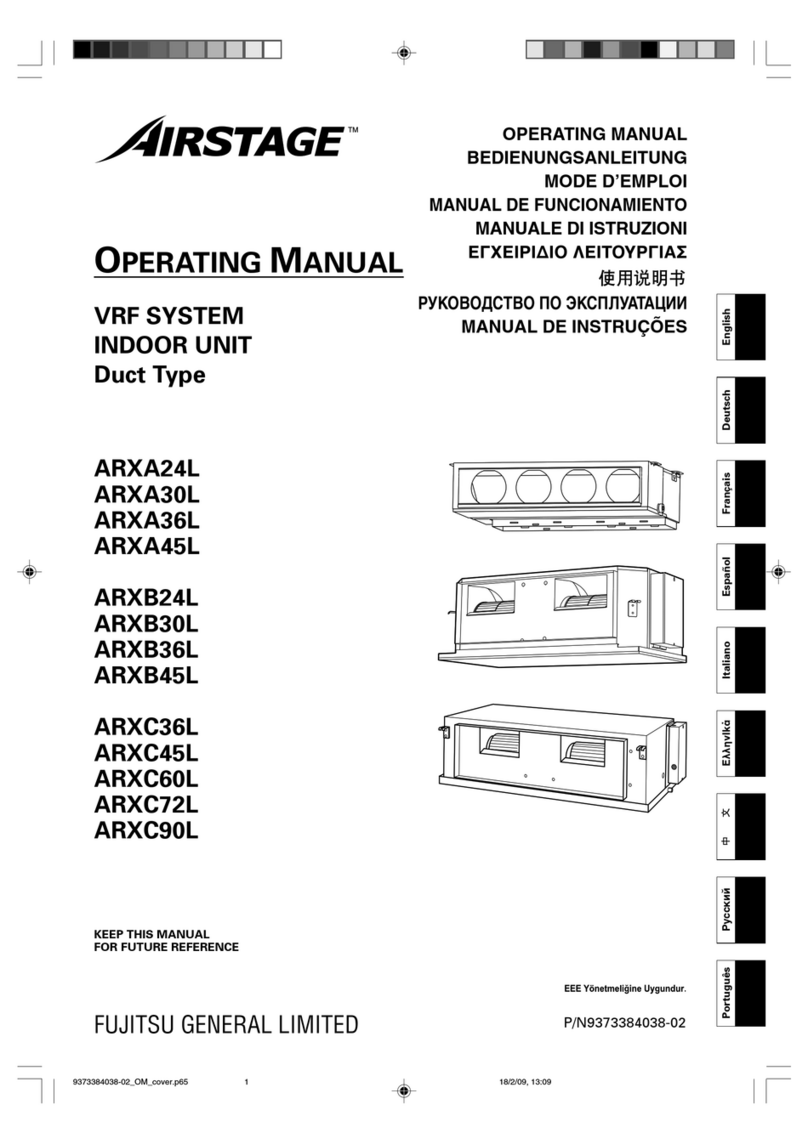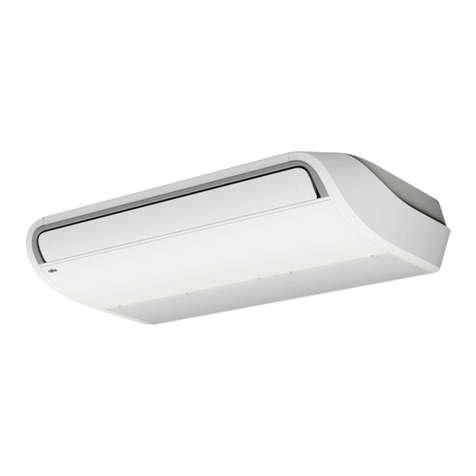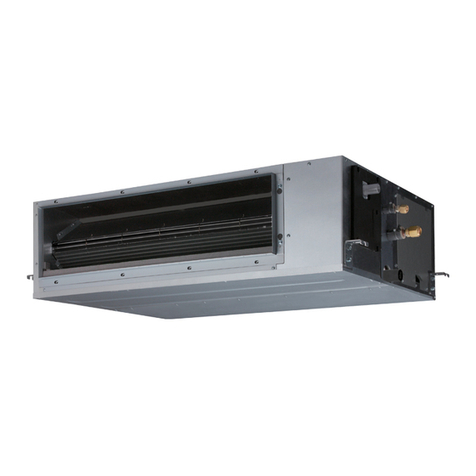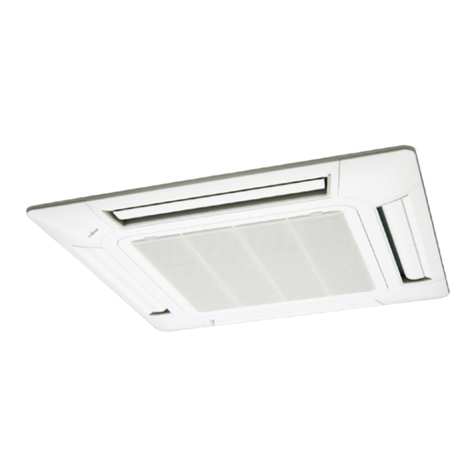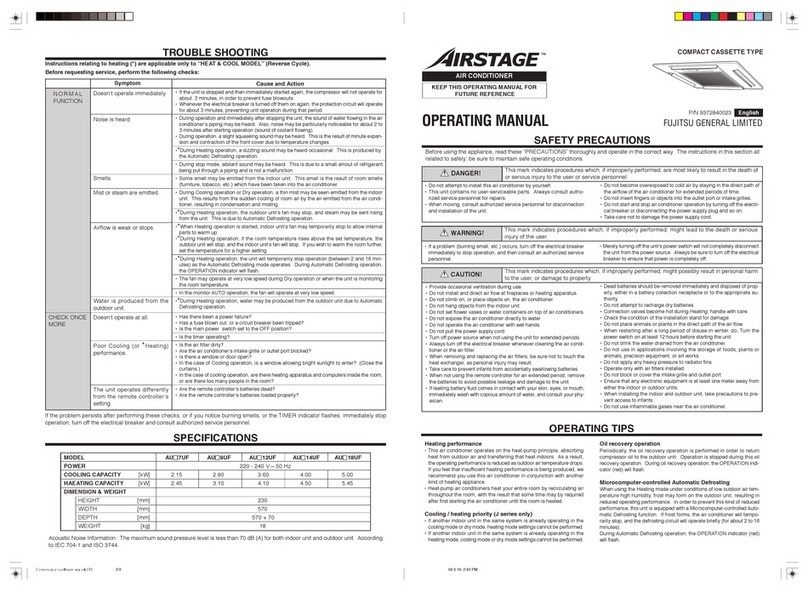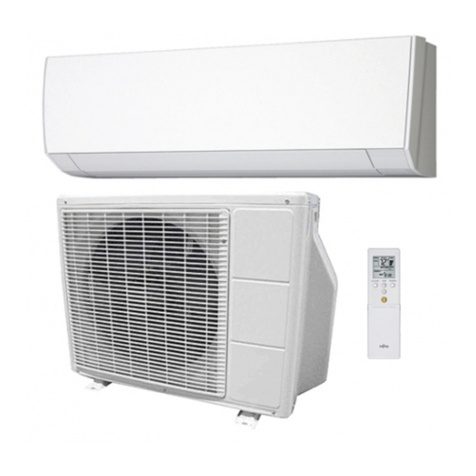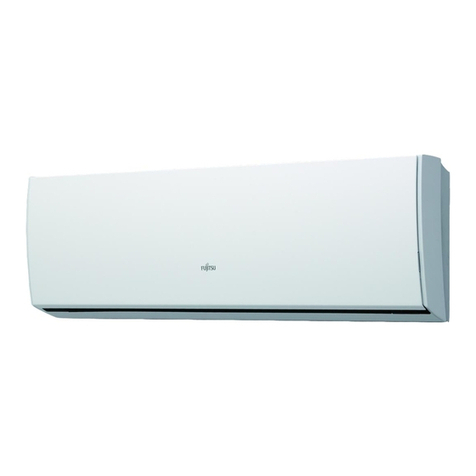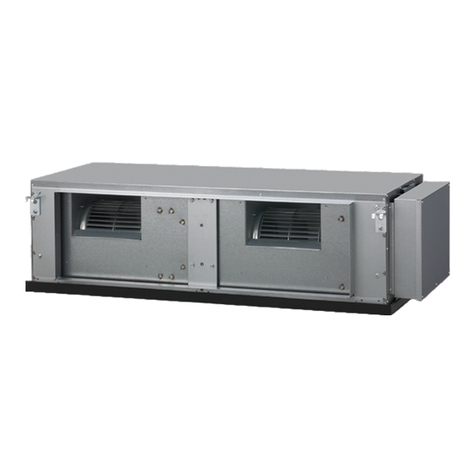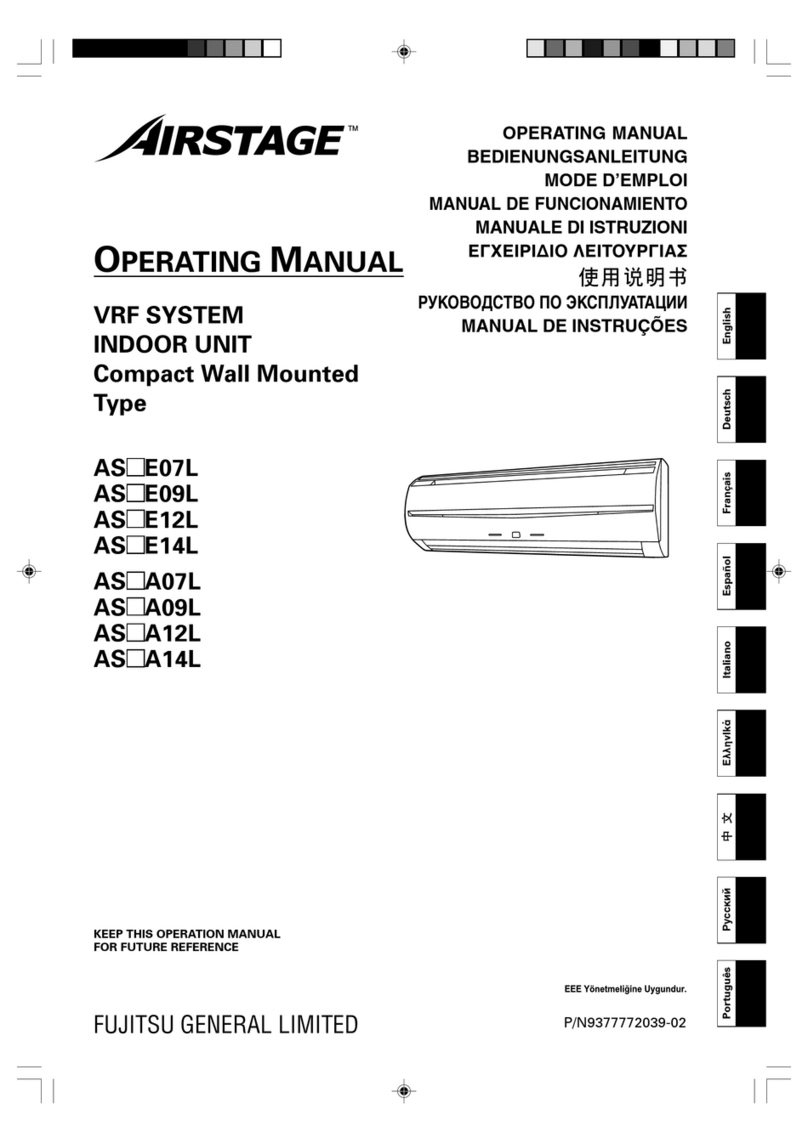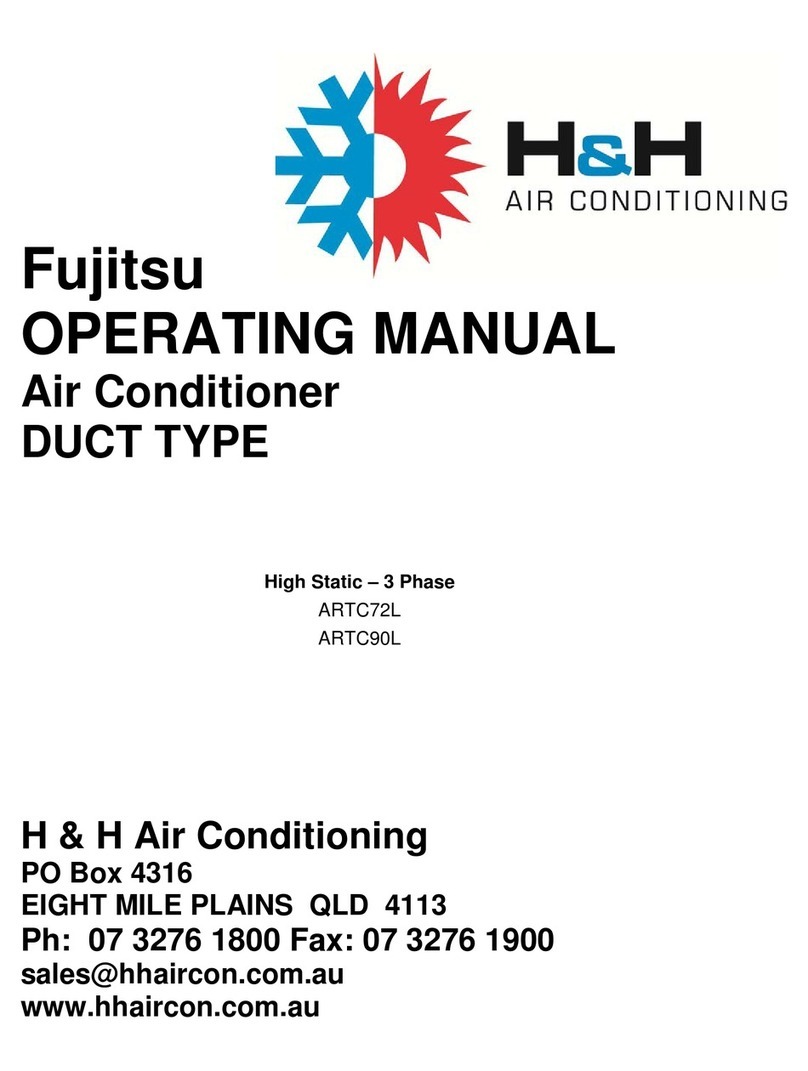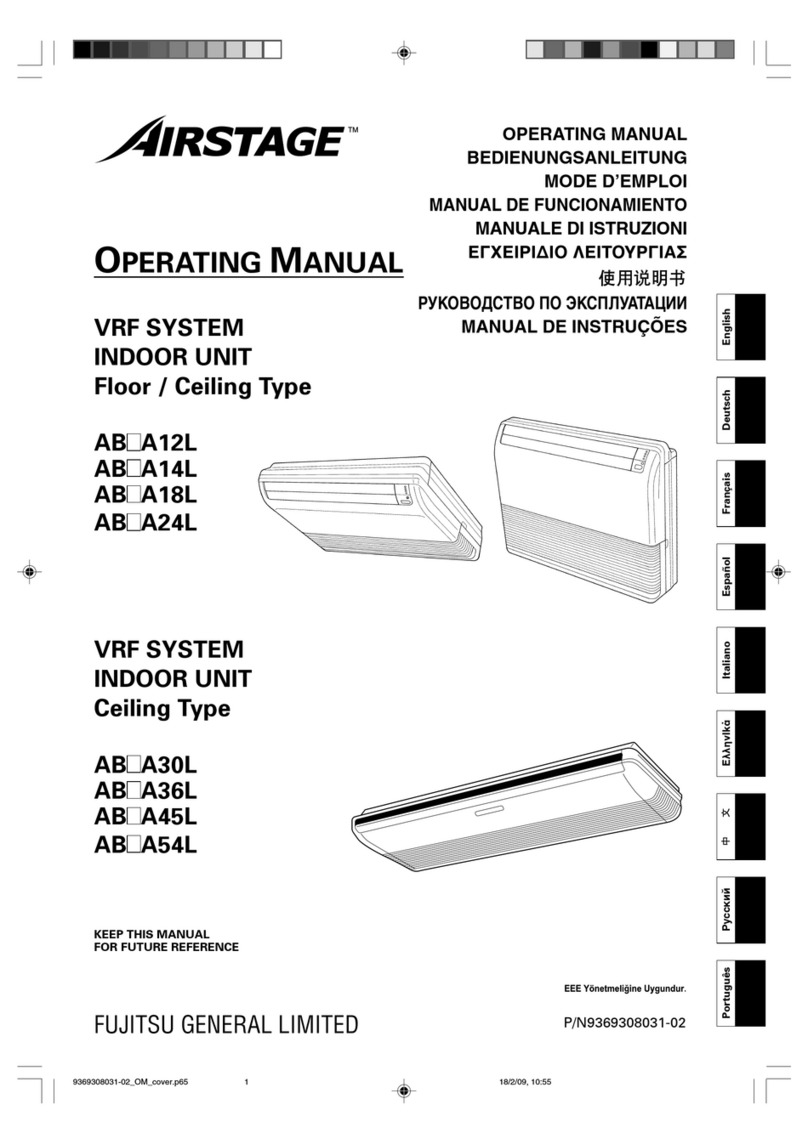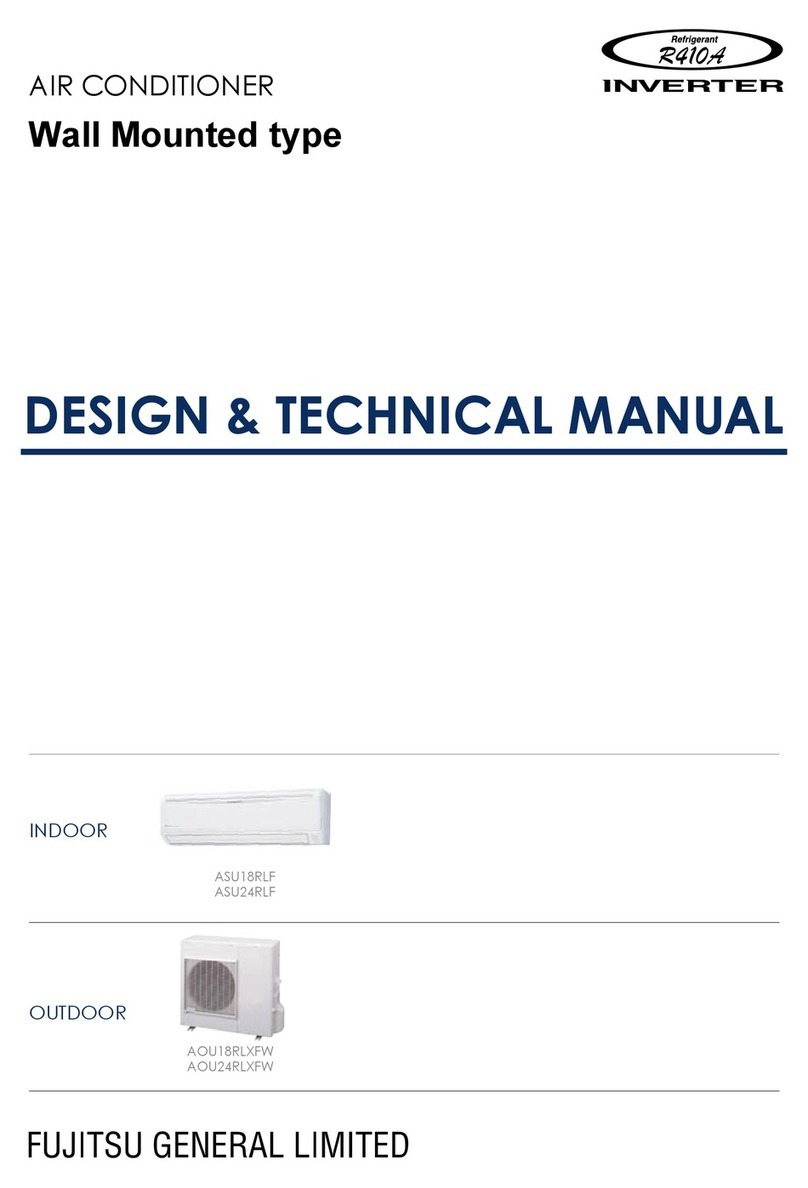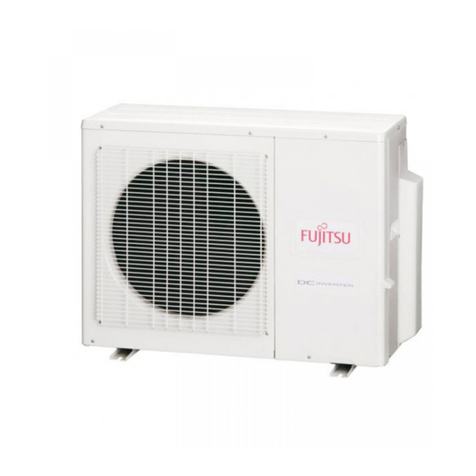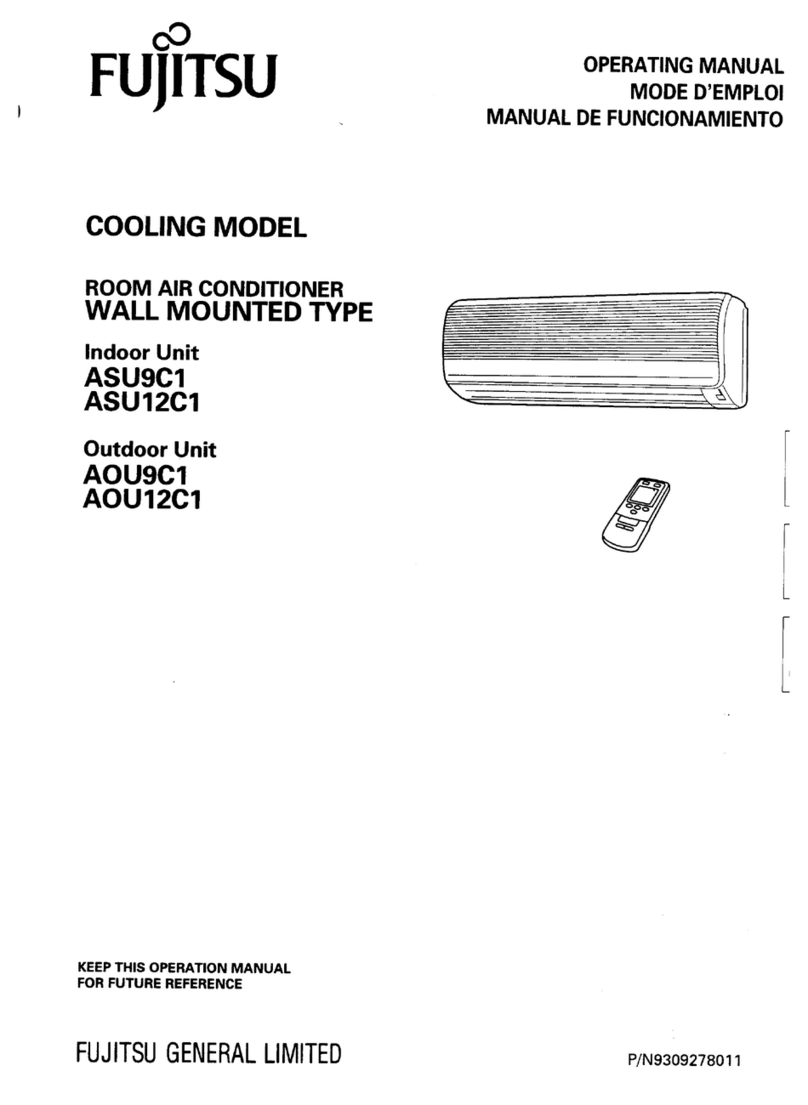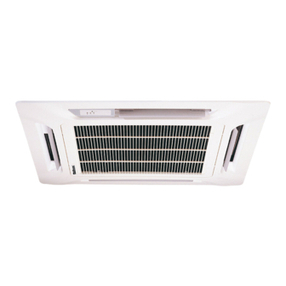
8
LOW FAN
POSITION FUNCTION
Fan (High Speed) and compressor operate - Rapid
heating effect at top capacity.
Fan (Low Speed) and compressor operate - Intermediate
heating effect and reduced operating noise.
High fan speed without heating/cooling - Room air is
circulated and cleaned.
)(OFF) The air conditioner is switched off.
Low fan speed without heating/cooling - Room air is
circulated and cleaned.
Fan (Low Speed) and compressor operate - Intermediate
cooling effect and reduced operating noise.
Fan (High Speed) and compressor operate-Rapid
cooling effect at top capacity.
HIGH POWER
(RED)
SUPER QUIET
(RED)
HIGH FAN
SUPER QUIET
(BLUE)
HIGH POWER
(BLUE)
AIR CONDITIONER OPERATION
REVERSE CYCLE MODEL
Air Circulation
To maintain a comfortable room temperature, an important
factor is the circulation of air. Room air can be circulated
without cooling/heating by selecting either HIGH FAN or
LOW FAN position on the master control.
Circulation of air without cooling/heating can be also effected
as follows:
1. When operating with the MASTER CONTROL switched
to HIGH POWER (RED) or SUPER QUIET (RED), turn the
thermostat fully clockwise.
2. When operating with the MASTER CONTROL switched
to HIGH POWER (BLUE) or SUPER QUIET (BLUE), turn
the thermostat fully counterclockwise.
Power Supply
Cooling
To obtain maximum cooling effect in the hot summer
select position HIGH POWER (BLUE) on the MASTER
CONTROL. Maximum moisture removal, air circulation
and dust removal are effected at the same time.
Selection of SUPER QUIET (BLUE) reduces operating
noise.
Heating
To obtain maximum heating effect in severe winter select
position HIGH POWER (RED) on the MASTER CONTROL.
Maximum air circulation is obtained at the same time.
Selection of SUPER QUIET (RED) reduces heating effect
and operating noise. However you may feel a higher
temperature at the air outlet compared to the HIGH
POWER (RED) position, due to the reduced fan speed.
Connect the Power Supply Plug to an electrical point.
●Connect securely, without looseness.
●In the case of direct line connections, turn on the breaker.
MASTER CONTROL Switch
NOTE: After you start driving, it will take approximately
10 minutes for the air from this unit become
warm. This delay is normal.
MASTER CONTROL
9385175112_En.p65 7/20/04, 4:14 PM8

